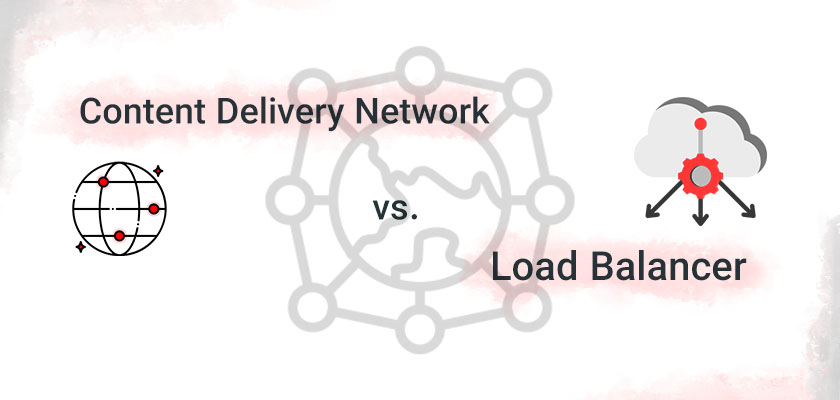
What is a CDN? What is a Load Balancer? In essence, they facilitate a smooth data transfer between users and servers. While they’re not essential, they are upgrades that you can implement for the benefit of your website and customers.
However, the concept of a CDN vs. load balancer can be described as completely different things. Both accomplish the same objective but process in different ways. Imagine an airplane and helicopter. Although both are able to fly, they’re two very distinct machines.
Which one do you choose to build your network? Let’s discuss the way that these two have roles within your network.
What Is a Load Balancer?
Based on the name, it is possible that the job of a load balancer is to distribute loads across multiple devices. If you’ve ever thought about that, then you’d be correct! The primary function of load balancers is to move traffic around several servers, making sure that no server is under-loaded and slowing down while other servers are watching traffic. The load balancer can be an application that is installed on a piece or device for networking or even a device that is a hardware component.
The Advantages and Disadvantages of Load Balancers
Load balancers are made to disperse traffic inbound over the servers in a cluster, reducing the pressure placed on each one. In contrast to CDNs that focus on a broad geographic spread, the servers that are managed by load balancers are typically within the same data center.
These tools are beneficial when you expect an enormous number of users to connect to your network at the same time. If many users try to connect to a server at the same time, they’ll usually need to wait for their turn. This could cause a long delay, particularly when servers host massive data files like images and videos. Load balancers are designed to stop these delays.
Load balancers are also looking for efficient usage of your server. Without these options, the bulk of your traffic can be directed to a single server until it’s full, and then the rest sits at a standstill.
Like CDNs, they can increase efficiency by redirecting traffic should one server be down. But, they require additional setup work to configure and maintain. If you’re using an on-chip load balancer, they can incur costs.
What Is a CDN?
CDN is a short form of a Content Delivery Network, which reduces the distance between the computer and the user. This is accomplished with the help of strategically placed servers in an area in order to do the same.
What is the significance of this? Like driving cars from one point to another, the further points are separated from each other, the longer it takes data to travel between the points and back. In networking, optical fibers have decreased the time needed to travel because they allow data to move at an average speed equal to that of light.
However, there’s an issue with the equipment that connects the servers and users. They can range from routers to repeaters, each of which processes data differently, which can result in a greater delay. While you may be able to set your CDN to avoid these bottlenecks, achieving this is not always feasible.
Read More about CDN: What Is CDN and How Does It Work?
The Advantages and Disadvantages of CDNs
CDNs are a collection of servers that are distributed over a large geographical area. Their primary goal is to ensure that whenever users request content, it is delivered by a server that is physically close as it is feasible, reducing the time to load.
The farther the data needs to traverse, the more repeaters and routers it will have to traverse. Each of them could cause delays and make the vast geographical distribution of the servers an important advantage of CDNs. But speedier response times aren’t the sole benefit.
Because the data is hosted on several servers, this creates more redundancy and security in the system. If one server has interruptions, the other servers can deliver content. If a server is affected by a distributed denial-of-service attack, the CDN could lessen the impact by redistributing the affected content.
They are also a great way to bypass any restrictions on access that could block people from certain areas from accessing your content.
There are, however, a few disadvantages to take into consideration. CDNs can be expensive, particularly if you’re looking for an international reach and have an approach involving multiple CDNs. Because third-party vendors usually control them, you’ll have to make sure you have the proper quality of support provided. In the event that the network fails completely, the implications could be grave, as was the case in the most recent Fastly interruption.
CDN vs. Load Balancer
With CDNs, you can transfer your data to several servers spread across various areas, which allows users to easily access their data without many delays. With load balancers, you can distribute traffic among your servers or clusters of servers to ensure that resources are utilized most efficiently.
Which is the best option to increase your network’s efficiency? If you’re able to choose both, why not? Although they all accomplish the same objective of increasing your network speed, they are two different gadgets that approach the task differently. Also, they won’t conflict with one another.
There are instances where it is the case that a CDN is more suitable than a load balancer, or the reverse is true. For instance, if hosting an application solely for a certain city, you could use the load balancer. But, if you’re serving the entire nation and have servers spread throughout the regions can ensure that delays remain at a minimum.
What should you look for in CDN hosting companies?
Many daredevils have attempted creating versions of CDNs however, should you need anything the most regarding cloud content delivery, it’s accountability. If you’re signed up with a provider, be aware that they now help distribute your website’s data to worldwide users. If anything goes wrong, it’s the last thing you want to be unable to reach an expert team to assist you. With this in mind, customer service is a crucial aspect to be considered.
Before you sign to a service, make sure you know their hours of service for clients and which channels they can be reached on. Do they have a phone number? Do they have chat facilities? Are they quick to respond to emails?
Naturally, transparency in pricing is something that business leaders shouldn’t overlook. Numerous businesses have prices that are dynamic, but they are usually released only after you request an estimate. For example, certain providers offer very clear and consistent rates.
Conclusion
So, is a CDN better than a load balancer? Which one should you choose? The answer is contingent on the kind of traffic you’re working with. More frequently than not, it’s both’. If you’re looking to expand your reach internationally, CDNs are essential in ensuring that users all over the world enjoy the same quick and secure experience. The load balancers, on the other hand, ensure that your primary data centers don’t get overloaded by a large volume of traffic.
Each CDNs, along with load balancers, increase the speed and stability of your network. When they are deployed in conjunction, all users will have rapid access to their applications regardless of where they’re and what application they’re trying to connect to.










Leave a Reply